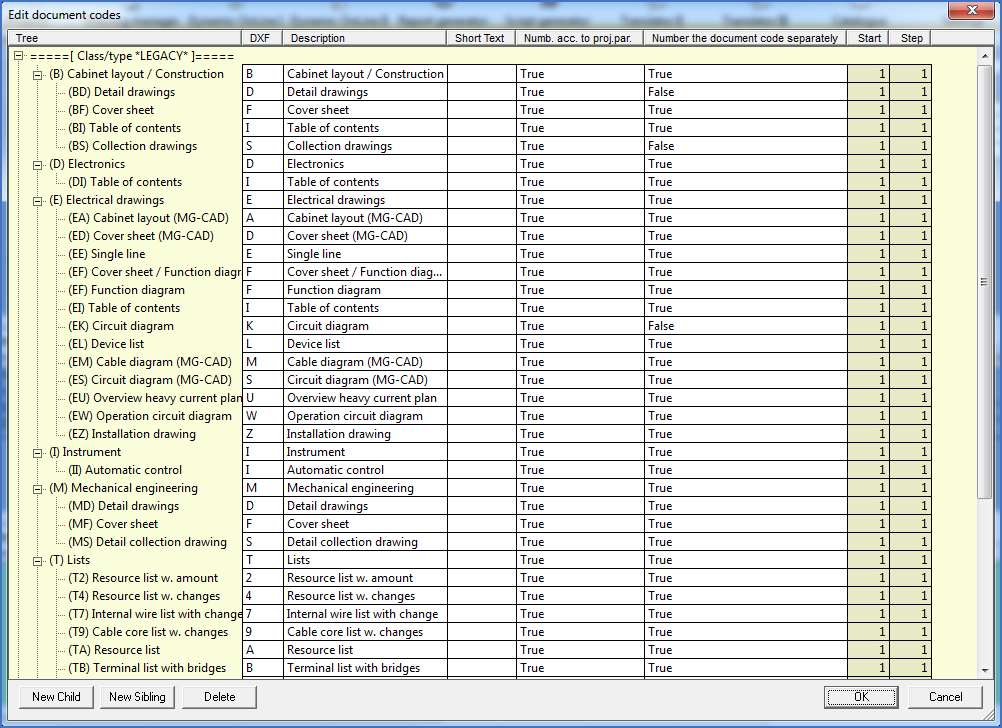|
<< Click to Display Table of Contents >> Sheet numbering |
  
|
|
<< Click to Display Table of Contents >> Sheet numbering |
  
|

Figure 574: Example of sheet numbering in the Drawing Manager
Sheet numbering is almost always done automatically by the Drawing Manager.
The Drawing Manager uses so-called "Sheet Number Counters" for that purpose. The Sheet Number Counters, in turn, are controlled by the document codes.
There are three kinds of Sheet Number Counters in the Drawing Manager:
•Individual counters (one counter per document code)
•Global counters (one common counter for multiple document codes)
•Counter for nameless documents (a counter for all sheets that have no document codes)
For each document code, you can specify a start and a step value for sheet numbering.
You can also specify, for each document code, if sheets belonging to that document code should be numbered separately from other document codes, or together with those using the same Sheet Number Counter. That is called a "global counter".
Yet another possibility, is to decide whether the start and step values that are specified for a document code should be used at all, or if general settings for start and step values in the project parameters should be used instead.
The last (right-most) document code in the file name is controlling the sheet numbering of that particular drawing sheet.
Example (from the Sample IEC1355 English demonstration project):
EFS______001.DXF
Three document codes are included in the file name: "E", "F" and "S" (for area, class and sub-class). The last one of them is the sub-class "S". That means that the settings for the sub-class "S" will control the sheet numbering of that particular drawing sheet.

Figure 575: Document codes and the settings "Numb. acc. to proj.par. ", "Number the document code separately" and start and step values.
If you set Number the document code separately to True for a document code, an individual counter will be used for that document code. So, that setting is obviously individual for each document code. The start and step values for such document codes are either retrieved from the project parameters, where a setting for start and step values is available, or from the definition of the document code itself. Which one of these two options that is used is controlled by the Numb. acc. to proj.par. setting (number according to project parameters).
Please note that only the last (right-most) document code in the file name is controlling the sheet numbering.
For all document codes that have been defined not to be numbered separately, one single common (global) counter is used. The start and step values for that global counter are always retrieved from the project parameters, never from the start and step values of the document codes. (“Global” is here referring to the entire project).
All nameless sheets, meaning sheets containing only underline and sheet number (and perhaps some constants), have a counter of their own. The start and step values for that counter are always retrieved from the project parameters.
More detailed information about the settings that can be made for each document code, is found in the Document code management sub-topic.